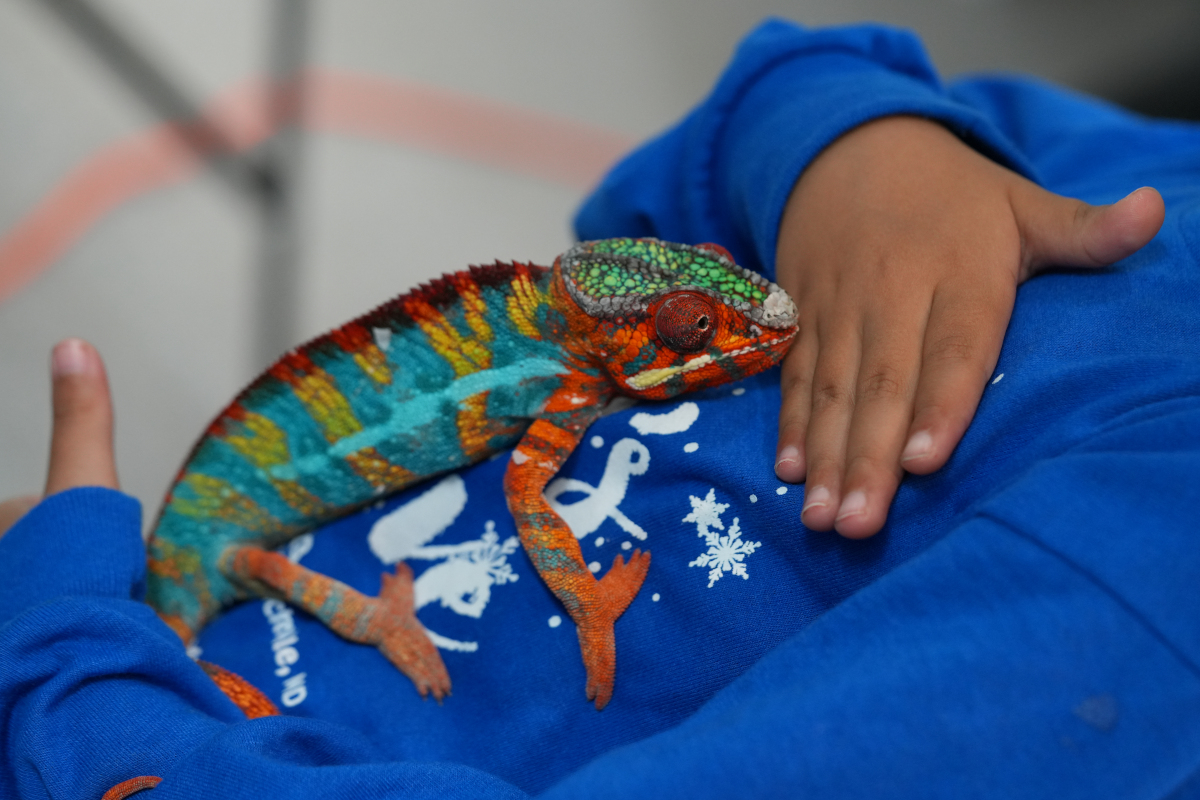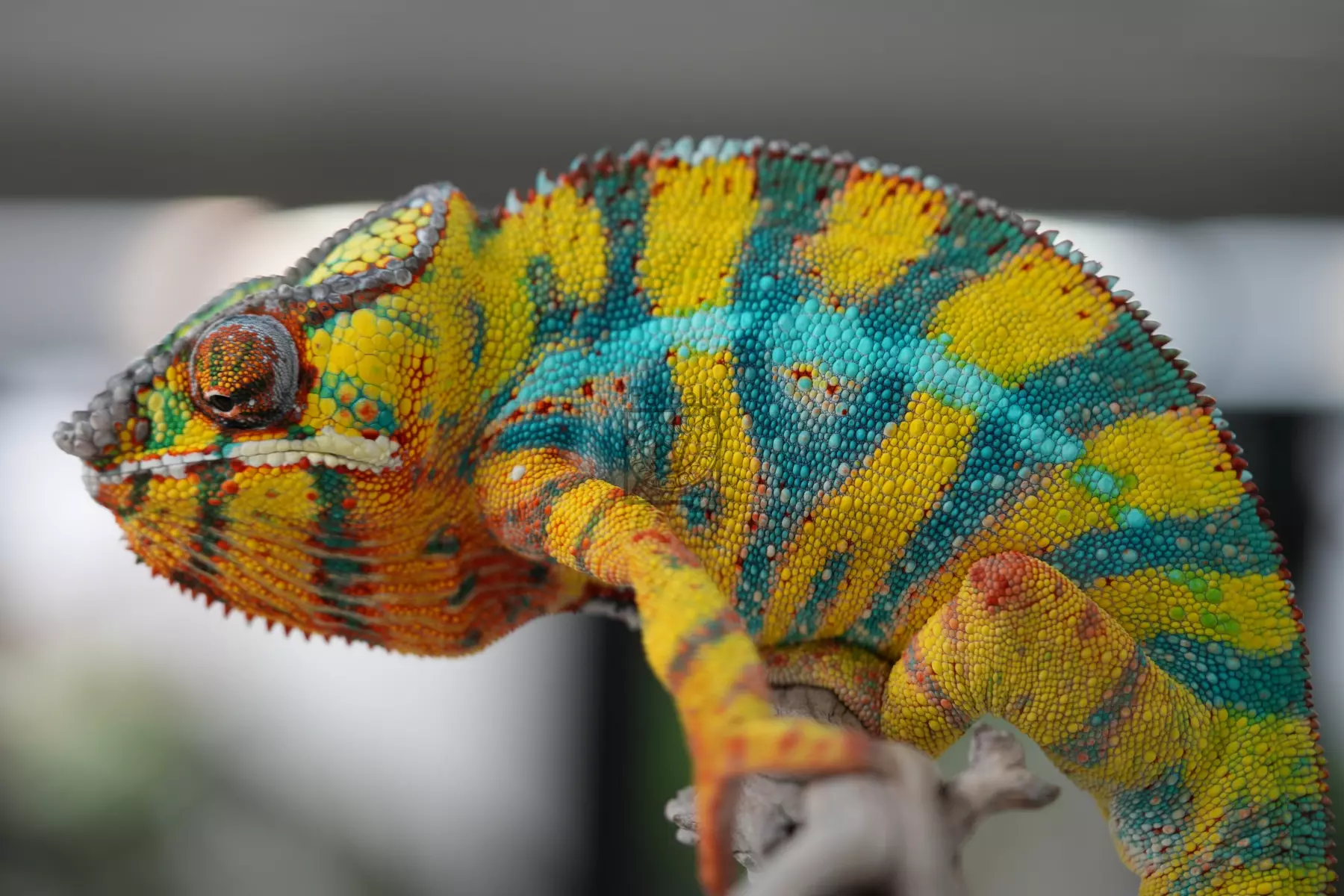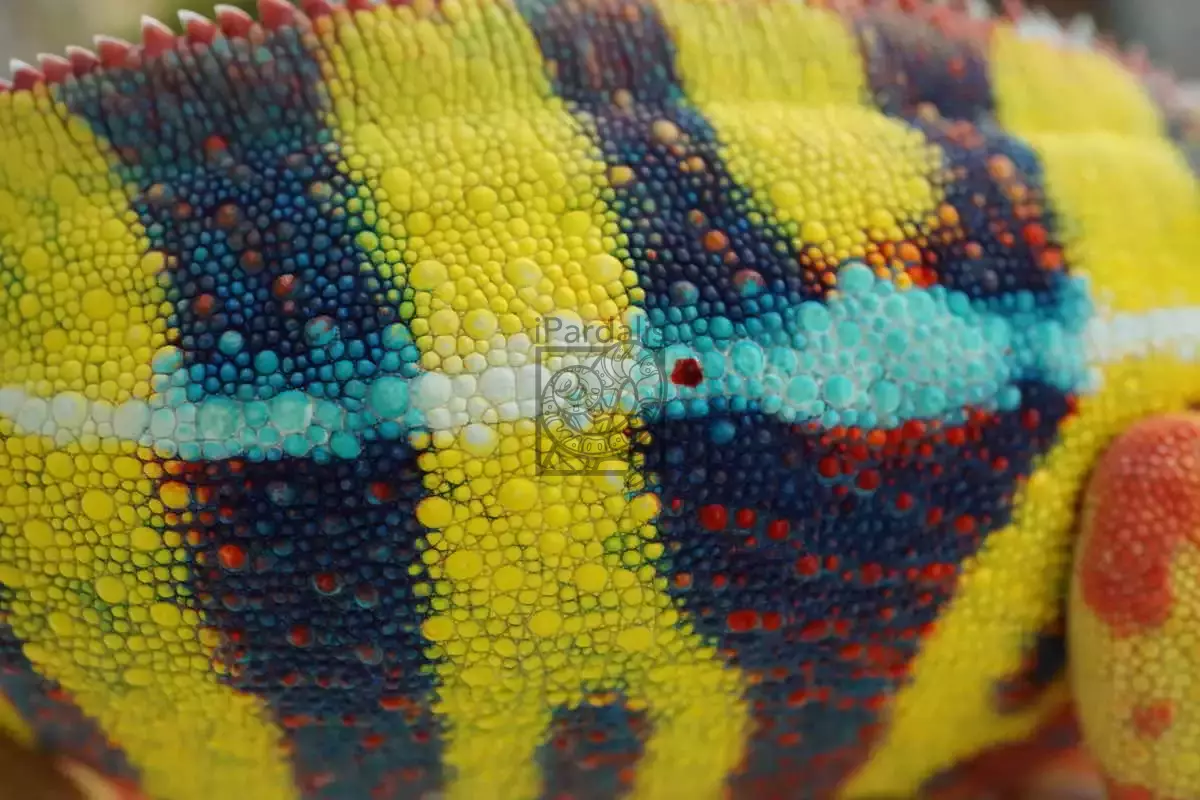
Understanding Panther Chameleon Behavior
Are Panther Chameleons Friendly?
Panther Chameleons are solitary creatures that thrive when housed individually. They prefer minimal interaction and are not naturally inclined towards social behaviors. While not inherently aggressive, some may exhibit territorial tendencies, especially when their personal space is invaded suddenly. Handling is generally discouraged; it’s essential to provide them with ample opportunities to retreat and hide as they desire. Limit interactions until they associate your presence with positive experiences like feeding. Patience is key.
Building Trust with Your Panther Chameleon
Establishing trust requires a slow, patient approach that respects the chameleon’s autonomy. Employing choice-based handling techniques can be effective, emphasizing the chameleon’s control over interactions. Hand-feeding is a practical method to build trust, allowing the chameleon to associate you with a positive experience. Remember, the goal is to respect their natural behaviors rather than imposing human expectations.
Considerations for Keeping Panther Chameleons as Pets
Panther Chameleons can be rewarding pets, teaching owners to appreciate nature without expecting reciprocation. They embody the principle of providing care and security unconditionally, offering valuable lessons in patience and respect for wildlife. This perspective is particularly meaningful in today’s fast-paced world, where immediate gratification is often sought.
Challenges in Chameleon Care

Why Are Panther Chameleons Considered Difficult to Care For?
Creating an environment that mirrors their natural habitat is crucial for Panther Chameleons. This involves setting up misting systems, incorporating live plants, and maintaining high humidity levels, especially at night. While these requirements may seem daunting, many aspects can be automated using timers and appropriate equipment. Once the habitat is properly established, chameleon care becomes more manageable. Interestingly, maintaining their diet, particularly managing feeder insects like crickets, often presents a greater challenge than habitat maintenance.
Suitable Chameleon Species for Beginners
For those new to chameleon care, both Veiled Chameleons (Chamaeleo calyptratus) and Panther Chameleons (Furcifer pardalis) are considered more manageable options. Veiled Chameleons are renowned for their adaptability and resilience, making them a popular choice among beginners. Panther Chameleons, while slightly more demanding, are appreciated for their vibrant coloration and relatively tolerant nature towards handling. Both species have care requirements that, when met diligently, can lead to a rewarding pet ownership experience.
Basic Care Guidelines for Panther Chameleons
For beginners, focusing on the following essentials can ensure a healthy environment for a Panther Chameleon:
-
Enclosure: Provide a well-ventilated space with ample climbing structures, such as live plants and branches.
-
Temperature: Maintain a daytime range of 70-80°F, with a basking spot around 85°F. Nighttime temperatures can drop below 70°F to mimic natural conditions.
-
Lighting: Use UVB lighting (e.g., Arcadia T5 6% or Reptisun 5.0) to support calcium metabolism and overall health. Ensure a 12-hour light/dark cycle.
-
Humidity: Keep humidity levels between 40-60% during the day. Mist the enclosure at least twice daily to maintain appropriate moisture levels.
-
Diet: Offer a varied diet of gut-loaded insects, such as crickets and roaches. Supplement feedings with calcium daily and multivitamins twice a month. Recommended gut-loading products include Feeder Fuel and Cricket Crack.
Regular monitoring of your chameleon’s health, behavior, and fecal matter is essential. Establish a relationship with a veterinarian experienced in reptile care for periodic check-ups to ensure ongoing well-being.
By understanding and respecting the unique needs of Panther Chameleons, you can create a nurturing environment that allows these remarkable creatures to thrive in captivity.
We have been listening to the Chameleon Academy Podcast for up to date husbandry advice since 2015. Bill has brought most, if not all, of the top chameleon breeders and experts onto his show for interviews ranging from how to understand what a healthy poop looks like to various supplementation and lighting strategies. If you start there - you will be fine.
Check out Bill Strand’s recent vlog on taming his Shamrock Chameleons for some great tips!
Frequently Asked Questions Back



